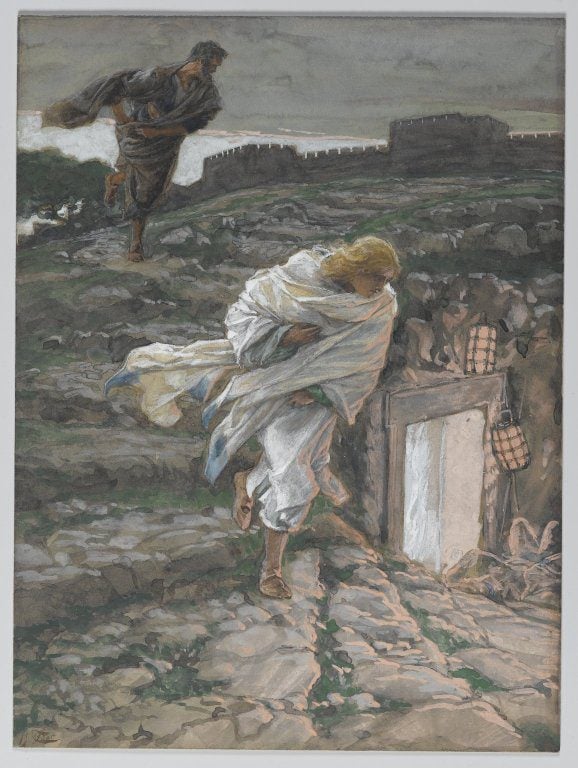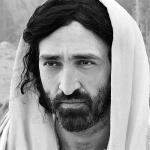
Michael J. Alter is the author of the copiously researched, 913-page volume, The Resurrection: a Critical Inquiry (2015). I initially offered 59 “brief” replies to as many alleged New Testament contradictions (March 2021). We later engaged in amiable correspondence and decided to enter into a major ongoing dialogue about his book. He graciously sent me a PDF file of it, free of charge, for my review, and has committed himself to counter-response as well: a very rare trait these days. All of this is, I think, mightily impressive.
Mike describes himself as “of the Jewish faith” but is quick to point out that labels are often “misleading” and “divisive” (I agree to a large extent). He continues to be influenced by, for example, “Reformed, Conservative, Orthodox, and Chabad” variants of Judaism and learns “from those of other faiths, the secular, the non-theists, etc.” Fair enough. I have a great many influences, too, am very ecumenical, and am a great admirer of Judaism, as I told Michael in a combox comment on my blog.
He says his book “can be described as Jewish apologetics” and one that provides reasons for “why members of the Jewish community should not convert to Christianity.” I will be writing many critiques of the book and we’ll be engaging in ongoing discussion for likely a long time. I’m quite excited about it and eagerly enjoy the dialogue and debate. This is a rare opportunity these days and I am most grateful for Mike’s willingness to interact, minus any personal hostility.
I use RSV for all Bible verses that I cite. His words will be in blue.
*****
Alter wrote:
CONTRADICTION #71 Four Different Stories
The gospel narratives present several internal contradictions. Mark and Matthew say nothing about Peter or anyone else investigating the tomb. (p. 394)
Then they don’t contradict the other two Gospels on this score, do they? They don’t include “different” stories (let alone “contradictions”), because they have no stories at all about this incident. It’s just more of Alter’s odd, peculiar definition of “contradiction” that has no support in any logical textbook that has existed since the ancient Greeks.
Luke [24:12] states that Peter alone ran to the tomb and explored it from outside. (p. 394)
RSV omits this verse because it’s not found in western manuscripts. So here is another version:
Luke 24:12 (NKJV) But Peter arose and ran to the tomb; and stooping down, he saw the linen cloths lying by themselves; and he departed, marveling to himself at what had happened.
Luke 24:12 doesn’t say that Peter “alone” ran to the tomb (which would exclude everyone else). It says that Peter ran to the tomb, without mentioning anyone else (that might have also done it). It’s a logical difference. On a web page that lists many translations of the passage, there was not a single instance of “only Peter” or “Peter alone.” His “stooping down” here doesn’t contradict John’s account, which doesn’t say he stooped from the outside; it says that John (“the other disciple”) did that.
He omits any statement about anyone else going to the tomb. (p. 394)
Yes he does. But that’s not a contradiction. It doesn’t contradict Matthew and Mark because they don’t have the story, so there is nothing to contradict. It doesn’t contradict John, either, because it doesn’t say “only Peter” or “Peter alone” or “Peter by himself ran to the tomb and no one else ever did”, etc. It’s embarrassing to have to repeat these basic facts of logic over and over and over and over and over again, but Alter (who knows why?) keeps making the same elementary logical mistakes.
John’s text seemingly contradicts Luke and declares that two people raced to the tomb, namely, Peter and the disciple who Jesus loved. (p. 394)
It does not contradict. It’s complementary. It may seem odd or strange or something “difficult” that needs to be adequately explained, but it’s not contradictory. Here it is:
John 20:3-8 Peter then came out with the other disciple, and they went toward the tomb. [4] They both ran, but the other disciple outran Peter and reached the tomb first; [5] and stooping to look in, he saw the linen cloths lying there, but he did not go in. [6] Then Simon Peter came, following him, and went into the tomb; he saw the linen cloths lying, [7] and the napkin, which had been on his head, not lying with the linen cloths but rolled up in a place by itself. [8] Then the other disciple, who reached the tomb first, also went in, and he saw and believed;
Then John adds that it was the other disciple who Jesus loved who entered the tomb only after Peter first entered it. Remarkably, Mark, Matthew, and Luke omit the fact that Peter entered Jesus’s burial place. (p. 394)
Again, strange and something to “figure out”, but not contradictory. And so the subtitle of Alter’s section contains a falsehood (sadly, not uncommon in his book!). But Luke actually does mention others visiting the tomb, twelve verses later:
Luke 24:12 “Some of those who were with us went to the tomb, and found it just as the women had said; but him they did not see.”
Catholic apologist Karlo Broussard commented about this issue of differing reports:
Discrepancy one states that John records only Mary Magdalene going to the tomb (John 20:1), yet Matthew (28:1-2), Mark (16:1-3), and Luke (24:10) report that she was with other women.
The objection falsely assumes that John was intending to say Mary Magdalene was the only woman. John merely showcases Mary Magdalene without any mention of the other women. And just because an account is incomplete, it doesn’t follow that it is in error. Even Luke doesn’t give a complete account of the women who went to the tomb (24:10).
Moreover, John’s account of Mary’s response to Peter and John indicates that he knew other women were with her: “she ran . . . and said to them . . . we do not know where they have laid him” (John 20:2, emphasis added). Luke employs a similar tactic when he first showcases Peter going to the tomb (Luke 24:12), but then later informs his reader that others had gone as well (Luke 24:24).
Alter made many claims of alleged contradictions in the Resurrection accounts earlier in his book. I had neither the patience nor energy to tackle all of them (sort of like having to squat 150 flies at once). But here is a harmony of all of the stories regarding the Resurrection and what happened afterwards, from a Bible questions website, based on the work of Gary Habermas and Michael Licona:
- Jesus is buried, as several women watch (Matthew 27:57-61; Mark 15:42-47; Luke 23:50-56; John 19:38-42).
- The tomb is sealed and a guard is set (Matthew 27:62-66).
- At least 3 women, including Mary Magdalene, Mary the mother of James, and Salome, prepare spices to go to the tomb (Matthew 28:1; Mark 16:1).
- An angel descends from heaven, rolls the stone away, and sits on it. There is an earthquake, and the guards faint (Matthew 28:2-4).
- The women arrive at the tomb and find it empty. Mary Magdalene leaves the other women there and runs to tell the disciples (John 20:1-2).
- The women still at the tomb see two angels who tell them that Jesus is risen and who instruct them to tell the disciples to go to Galilee (Matthew 28:5-7; Mark 16:2-8; Luke 24:1-8).
- The women leave to bring the news to the disciples (Matthew 28:8).
- The guards, having roused themselves, report the empty tomb to the authorities, who bribe the guards to say the body was stolen (Matthew 28:11-15).
- Mary the mother of James and the other women, on their way to find the disciples, see Jesus (Matthew 28:9-10).
- The women relate what they have seen and heard to the disciples (Luke 24:9-11).
- Peter and John run to the tomb, see that it is empty, and find the grave clothes (Luke 24:12; John 20:2-10).
- Mary Magdalene returns to the tomb. She sees the angels, and then she sees Jesus (John 20:11-18).
- Later the same day, Jesus appears to Peter (Luke 24:34; 1 Corinthians 15:5).
- Still on the same day, Jesus appears to Cleopas and another disciple on their way to Emmaus (Luke 24:13-32).
- That evening, the two disciples report the event to the Eleven in Jerusalem (Luke 24:32-35).
- Jesus appears to ten disciples—Thomas is missing (Luke 24:36-43; John 20:19-25).
- Jesus appears to all eleven disciples—Thomas included (John 20:26-31).
- Jesus appears to seven disciples by the Sea of Galilee (John 21:1-25).
- Jesus appears to about 500 disciples in Galilee (1 Corinthians 15:6).
- Jesus appears to his half-brother James (1 Corinthians 15:7).
- Jesus commissions his disciples (Matthew 28:16-20).
- Jesus teaches his disciples the Scriptures and promises to send the Holy Spirit (Luke 24:44-49; Acts 1:4-5).
- Jesus ascends into heaven (Luke 24:50-53; Acts 1:6-12).
This matches the similar outline given by the late Michael Green in The Empty Cross of Jesus (first ed, p 122). (“Do the resurrection accounts contradict each other?”, Ian Paul, 4-21-20)
***
Photo credit: Saint Peter and Saint John Run to the Sepulchre, by James Tissot (1836-1902) [Wikimedia Commons / public domain]
Summary: Michael Alter makes several claims of alleged contradiction regarding Peter & John at the empty tomb of Jesus. They all fail the logical smell test as “contradictions.” They’re complementary.
Tags: alleged Bible contradictions, alleged Resurrection contradictions, Bible “contradictions”, Bible “difficulties”, Bible Only, biblical inspiration, biblical prooftexts, biblical skeptics, biblical theology, exegesis, hermeneutics, Holy Bible, inerrancy, infallibility, Jewish anti-Christian polemics, Jewish apologetics, Jewish critique of Christianity, Jewish-Christian discussion, Michael J. Alter, New Testament, New Testament critics, New Testament skepticism, Resurrection “Contradictions”, Resurrection of Jesus, The Resurrection: A Critical Inquiry, Peter & John at the Empty Tomb
***












